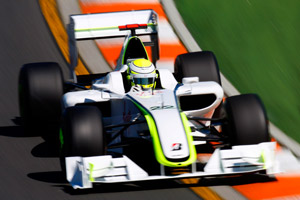This might help clarify the points you outlined.xpensive wrote:What an excellent as well as enlightning pic, Alejandro! That hub-thing at least looks like being made from an Aluminium-alloy of sorts, where the wheel is mounted on a cone and torque apparently conveyed through large-diameter teeth.
And look at that steep wheel-nut thread, looks almost as if it could be a double-thread?
Gaawd, I love people with attention to detail, this one goes to my engineers tomorrow, perhaps they learn something.
The hub is machined from titanium (using a mixture of turning, wire and spark erosion and some drilling\milling). The hub is hollow and teams use the hub to route cooling airflow to the brake disc. Air passes through the open inboard end of the hub and exits through radial slots in the mid section (just inboard of the large pitch teeth). To improve capacity for internal airflow and stiffness the wheel bearings are some 100-150mm (the inboard ones being narrower) in diameter, cost a few thousand pounds and last just two races! Those large pitch teeth are used to mount the brake disc via a machined bell. The wheel is actually driven using drive-pegs inserting into the hub. Good point about the double thread, I’m not so sure about that.
The upright around the hub is commonly machined MMC, although cast Ti is also used. On the Brawn the low mounted steering rack (inline with the lower wishbone) makes the toe link mounting difficult as the teams with a conventionally placed rack, have the upper wishbone and link connected to the sae plate, which allows camber changes to be made without affect toe. Brawn have a separate mounting for the lower wishbone and toe link, adjusting camber will require 2 shims, each placed between the mounting and upright. You will see the pushrod mounts direct to the upright and this is offset from the steering axis, to alter lateral weight transfer when the wheels are steered.



